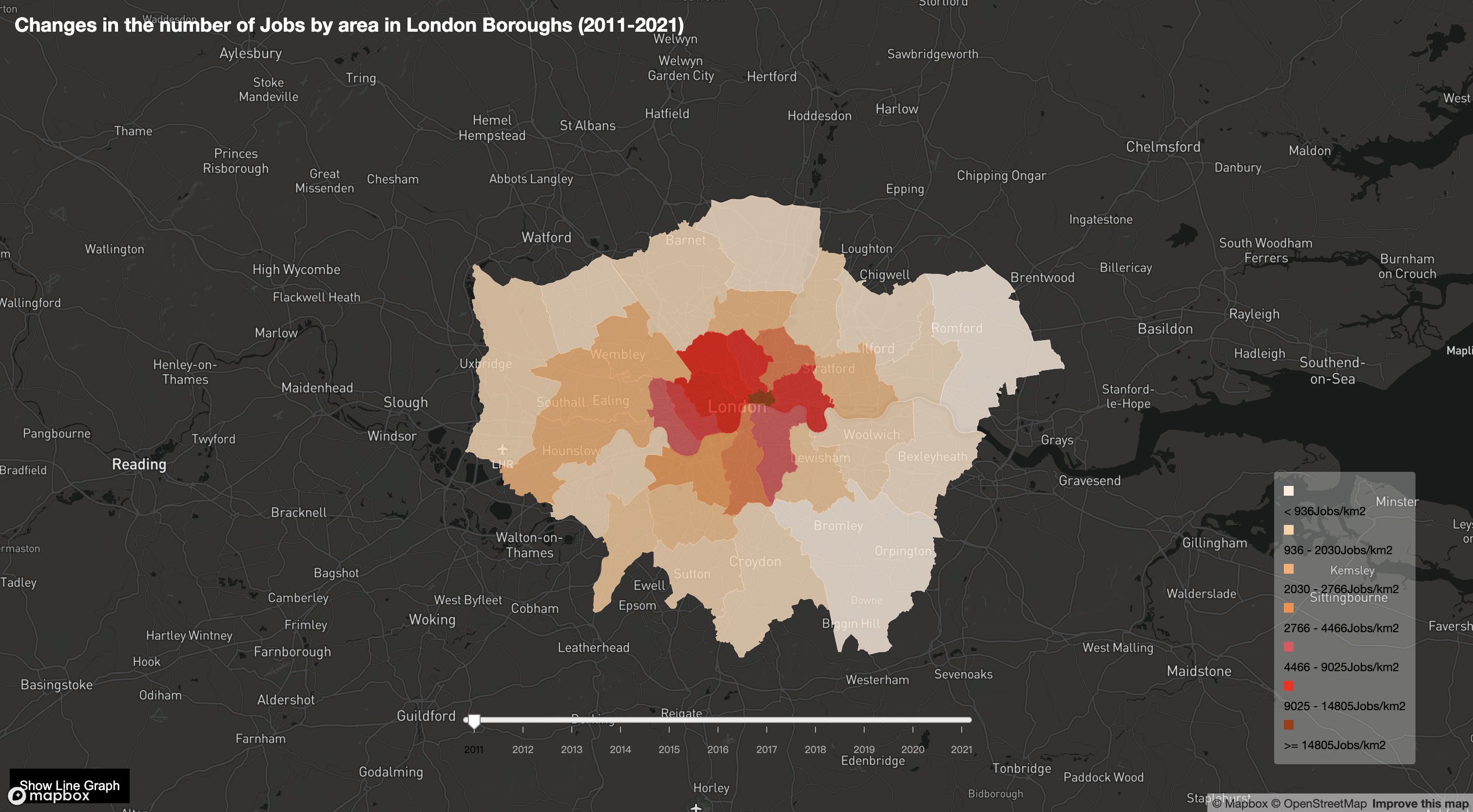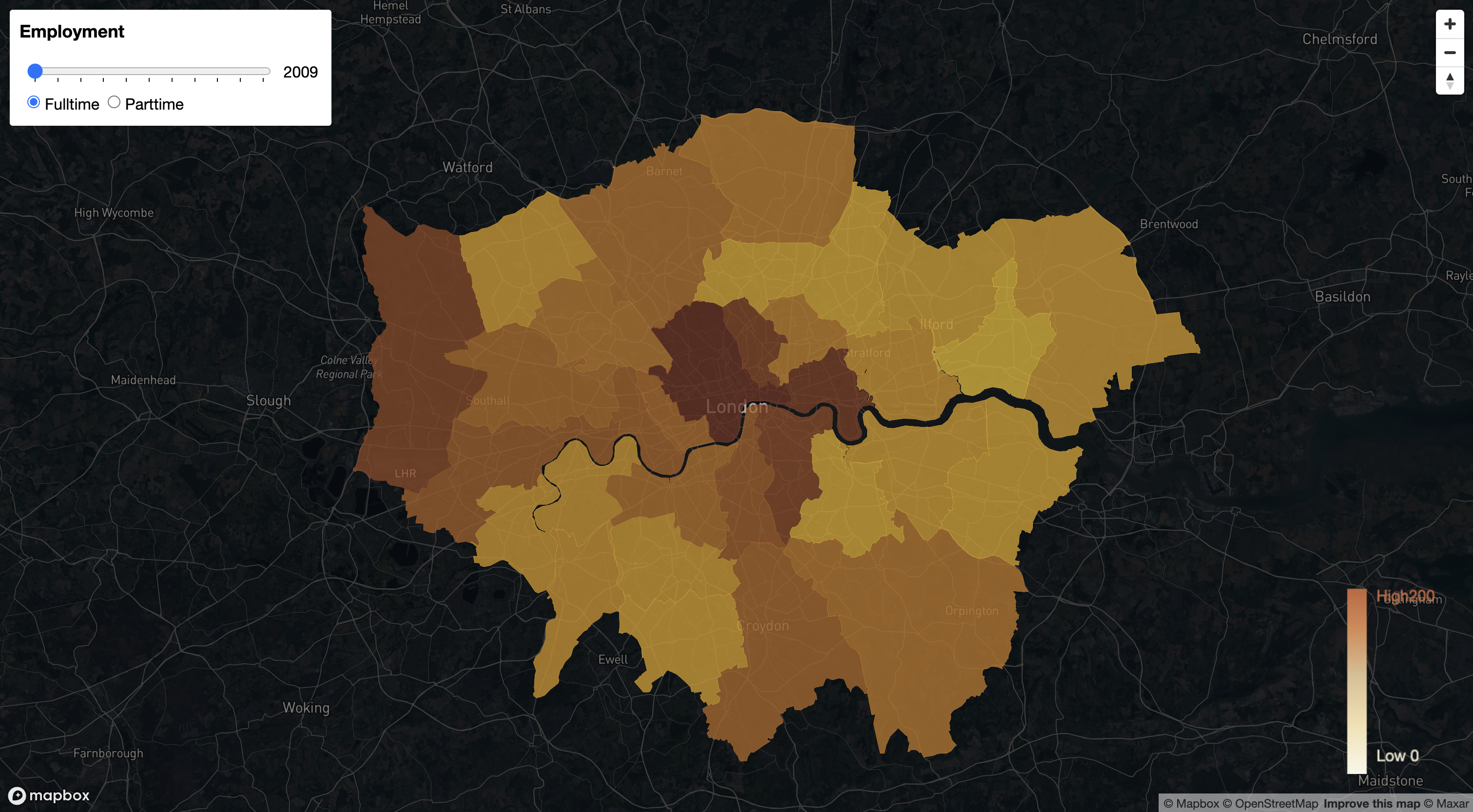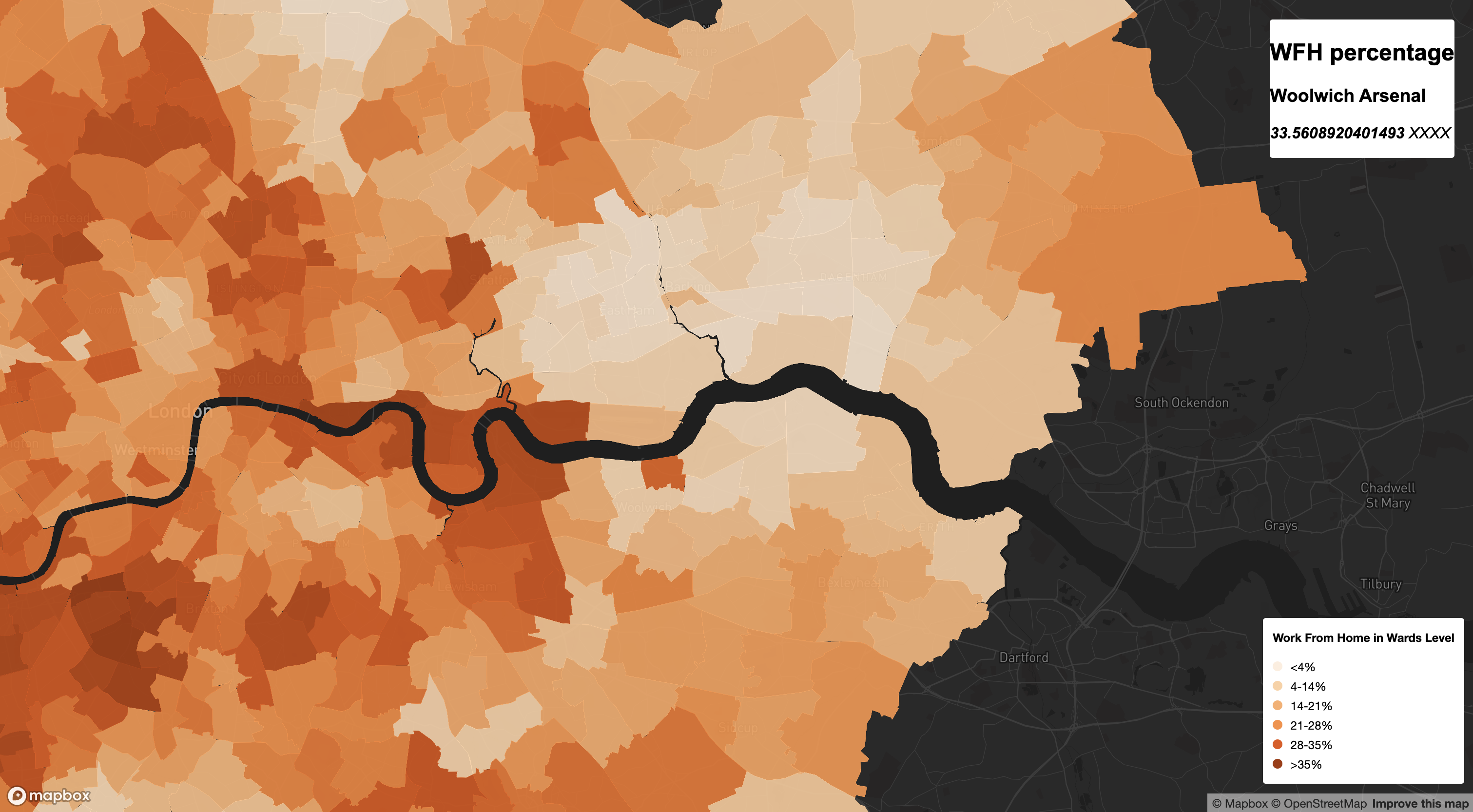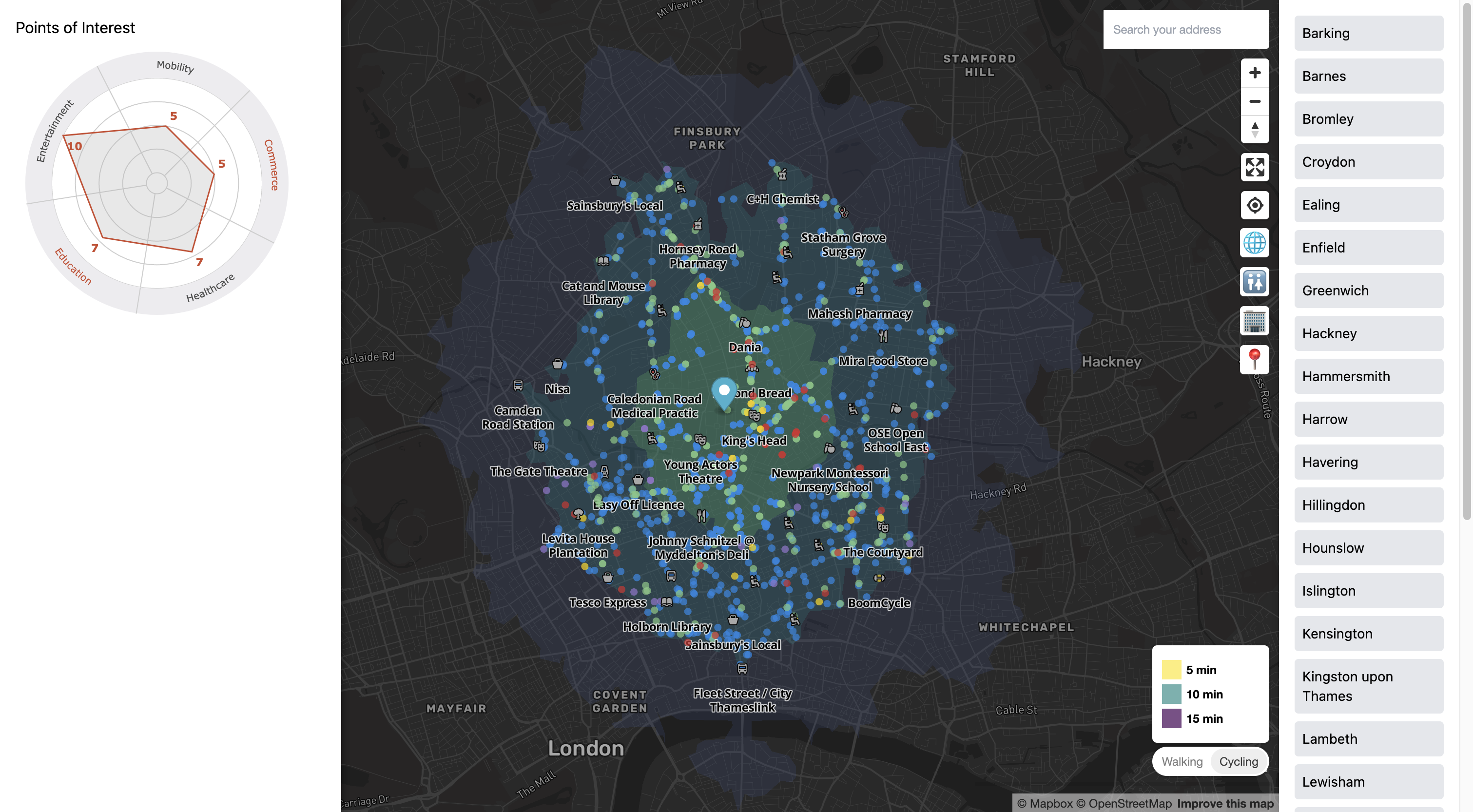Due to the COVID-19 pandemic in 2020, labourers were suddenly forced to stay and work from home. Since then, employees are no longer clustered in central London, but now spread across London. Although employees work from home, they still need to fulfil their basic needs. Thus, it is important for daily services to be available around their houses, which were previously built clustered around their offices. This shift forces the city to spread basic services across London. It is crucial to assess whether London is ready for this sudden change and whether areas in London provide employees’ basic services and needs.
To answer this question, it is important to know which part of London has a significant change of work-from-home percentage. In order to do this, an analysis of the number of work-from-home employee per working age population (16-65) can be done by assessing the change in the last 10 years, from 2011 to 2021.
INTRO
Workplaces and Facilities Services
It is proven that offices with happier employees have higher productivity and better financial performance (Seligman and Adler, 2019). Thus, in the last few years, companies has been implementing some strategies to boost productivity by maintain their employee’s well-being. One of them is by providing facilities management services in the office which cover employee’s daily needs such as physical infrastructure of health, food, and stationary supplies (Anker Jensen et al., 2012; Arampatzi and Burger, 2020). Thus in some area of a city with high number of labour , development of built environment happen simultaneously to fulfil worker needs. Hence, urban development happens significantly around workplaces area.
However, since pandemic covid-19, people are have been forced to work from home. Meanwhile they still need to access service facilities to support their daily productivity. Therefore, this website not only tell story of urban development through workplace perspective but also assess wherever we work now, does this area has all the service facilities needed within 15 minutes.
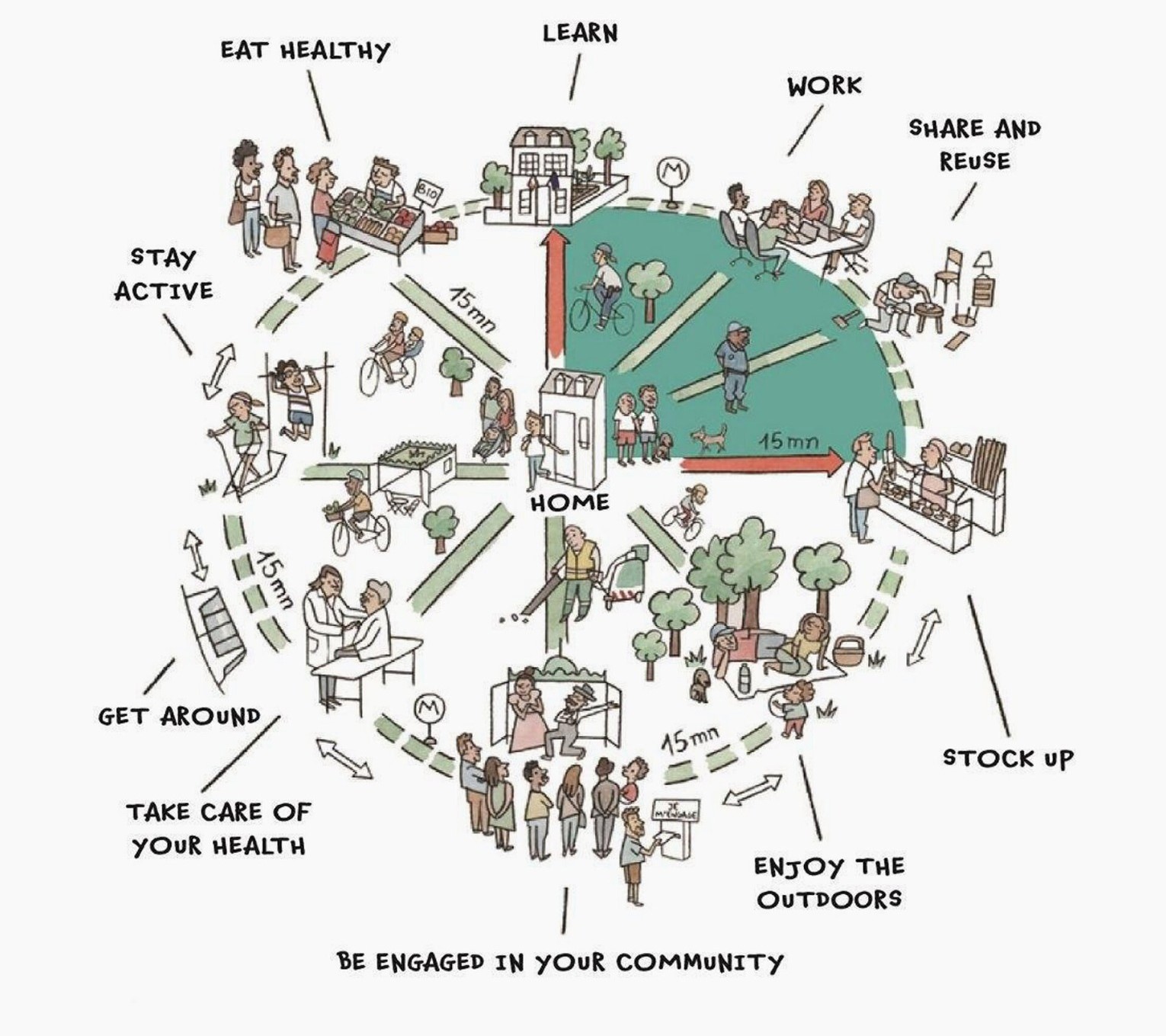
Job Density In UK
From 2011-2021, the UK's local job market displayed growth and resilience, with London leading in job density. Even amidst the 2020 COVID-19 crisis, the country rebounded swiftly, underscoring the robustness of its economy. Within London, the City of London and Westminster stood out as employment hotspots. This surge in job opportunities has positively impacted not just the economy but also societal well-being, offering residents financial security and a sense of purpose. The trend of increasing local jobs promotes a balance of economic prosperity and individual well-being, fostering community and stability.
workplace Distribution
Changes in the number of part-time and full-time jobs in each London borough from 2009 to 2019.
The number of full-time jobs in most parts of London is increasing, with a large number of full-time jobs concentrated in the City of London, Westminster, Southwark, Camden, Islligton, and Tower Hamlet.
The number of part-time jobs in most parts of London is also increasing, with a large number of part-time jobs concentrated in the City of London, Westminster, Camden, Islligton, and Tower Hamlet.
This graph shows the change in the ratio of full-time jobs to total jobs in various areas of London from 2009-2019. We found rates were growing in almost every region. The higher proportion of full-time employment indicates that London's economy is more mature and stable. The ranking of the ratio of almost every region has been changing, and the change of the ratio can reflect the change of the city's industrial structure. Areas with relatively high rankings include city of London, Westminster, and Tower Hamlets. It can show that the economic development of these regions is more stable, and they are very attractive to graduates.
After Pandemic COVID-19
Previously, workplaces are clustered in the inner London. However, in 2020 pandemic COVID-19 hitted and started sudden change in the world including London. Let's see it's impact on the workplaces landscape in London
Get exploreWork From Home
Work From Home Percentage at Borough Level
Based on the graph, there are 5 boroughs that underwent significant change of work-from-home percentage. These boroughs include City of London, Richmond Upon Thames, Wandsworth, Islington, and Lambeth. To have a better understanding of work-from-home percentage change, checking the spatial distribution would be beneficial.
To assess in more detail, a closer look to smaller aggregation scale can make us understand the spread of workplaces better. Thus, this maps not only visualizes work-from-home percentage on the borough level, but also on the ward level, which is equal to neighbourhood. This maps also provides spread of work-from-home percentage in 2011 and 2021.
Work From Home Percentage at ward Level
In the borough level, City of London has the highest change, while in the ward level, significant change was seen in the north and south west of London. Lavender, Balham, Clapham Common & Abbeville, South Balham, St Katharine's & Wapping, Northcote, Thamesfield, Southfields, Streatham Hill West & Thornton, and Trinity are the 10 wards with the highest work-from-home percentage change from 2011 to 2021. Assessment of services availability in these areas will be done in the next section using 15-minutes city tools.
15-minutes city TOOLS
The transition to remote working during the COVID-19 pandemic prompted an innovative reconfiguration of urban planning known as chrono-urbanism and the 15-Minute City concept. This model envisions a cityscape where every essential service—workplaces, educational institutions, healthcare facilities, and recreational spots—are within a 15-minute walking or cycling distance from residences. This shift highlights the importance of evenly distributing job opportunities and services across cities like London
Chrono-urbanism represents a revolutionary paradigm shift in urban planning. It is an approach that aims to disrupt and reshape the traditionally accepted model of urban organization, where residential, commercial, and leisure areas are distinct and often distant from each other. The concept reimagines cities with an emphasis on proximity, decentralization, and multi-functionality, presenting an appealing and more sustainable model living – the 15-Minute City.
Visualisation Recap
Here are previous visualisation you can revisit
Teams
Here are out team member behind this visualisation

JIABAO ZHU

JIANHONG LIU

Hilman Prakoso

